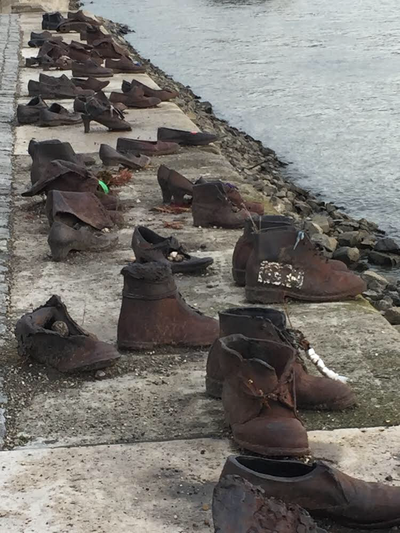Europe Tour 2017: Chapter Six

PRAGUE — A nearly four-hour train ride from Vienna to the Czech Republic on Thursday gave me plenty of time to reflect on visits earlier this week to Budapest and Austria’s capital.
Both cities have played key roles in European history, culture, the arts and more. Budapest and Vienna were built to last, having survived the region’s tumultous ancient history and two modern-day wars that killed millions and reshaped the continent.
On Sunday, I visited the House of Terror, a Budapest museum that recounts the monstrous fascist and communist regimes in the 20th century and remembers the thousands of citizens who were tortured or killed in the bowels of the bland, stone building. The exhibits included black and white film linterviews of relatives and friends tearfully recalling how victims were taken away and never heard from again.
In Vienna, I visited the Jewish Museum, a two-building complex that shares the ancient history of Jews in Europe as well as the rebuilding of the Jewish community in Vienna after WWII. In the courtyard of Judenplatz, or Jewish Square, stands a memorial to 65,000 Austrian Jews who were murdered during the war. The surfaces of the memorial are cast library shelves turned inside out and the spines of the books are facing inward. The shelves seem to hold thousands of books of the same edition, which stand for the Austrian victims of the Holocaust.
I’m frequently drawn to the harshest chapters of world history, hence I usually visit at least one site each day that retells and informs me of moments and eras that often define who we were and what we have become. As I continue my fourth-month solo journey this summer, I intend to visit Berlin and at least one WWII concentration camp, most likely Auschwitz in Poland.
Those who follow me on Facebook may have seen a photo of the Shoes of the Danube Bank memorial that I posted on Sunday. The memorial, not far from the massive Parliament building in Budapest, honors the thousands of Hungarian Jews murdered by fascists during WWII. Jews were ordered to remove their shoes before they were shot and fell into the river, which then carried away their bodies. A sculptor created 60 pairs of period-appropriate shoes in iron for the memorial in Budapest. One can’t help but be moved while visiting the site and reflecting on how those lives were so coldly erased.
Of course, my interests span other areas of Europe, including art, culture, society and sunny beaches. I toured the grand Albertina palace in Vienna and its permanent exhibition of paintings by Monet, Degas, Cezanne and Picasso. (How’s that for name-dropping?) I also learned for the first time about Austrian Maria Lassnig, considered one of the 20th century’s most important women artists.
I was In awe during my tour of St. Stephen’s Cathedral, which was completed in 1160 and is the mother church of the Roman Catholic Archdiocese of Vienna. The grandeur commands silence and contemplation as soon as one enters.
One of my final stops in Vienna was the Sigmund Freud museum, which is the house at Berggasse 19, where Freud lived and worked for 47 years until he was forced to flee to London from Nazi-controlled Vienna. A couple doors down the street, a restaurant chalkboard menu read in large letters: Freud Salat. Write your own one-liners here.
* This story was originally published as a post from the blog "Editor's Notes." Read all stories from this blog